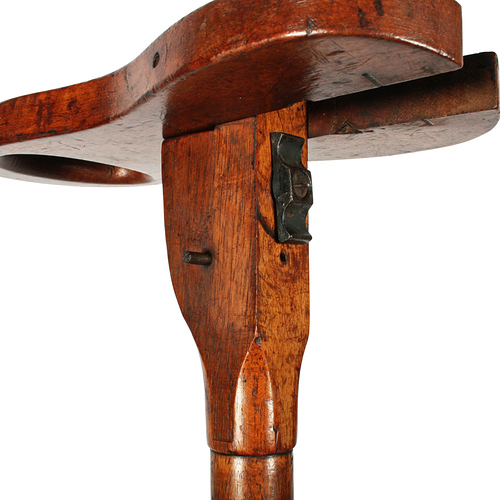Some background history before I give my simple answer.
My first uni had a crude and uncomfortable seat: a rectangle of metal with rounded corners, and the ends curved up slightly. On top of this was an oblong block of cheap foam, not glued in place, but simply covered with thin nylon cloth — not even ripstop nylon. I improved it by binding it together with self adhesive handlebar tape.
My second and third unis had Viscount saddles which were heavy, but adequately comfortable. The plastic bumpers were poorly attached with self tapping screws and fell off regularly. Only my third uni had a built in grab handle on the seat. Now all my unis have built in grab handles.
My first uni had no quick release on the seat post clamp. I improvised with a levered nut (a one armed wingnut?) pirated from an old shopper bike.
My first uni had lollipop bearing holders held in place with self tapping screws, one of which sheared after a week or so and had to be drilled out. The bearing holders rattled in the frame as I rode. My second uni had lollipop bearing holders held firmly in place with through bolts and Nylock nuts. They took ages to remove. My third had cheap pressed steel bearing caps. I was on about my sixth uni before I had one with machined bearing caps.
My first uni had cottered cranks. That means that each end of the axle was round with only one flat ground into it. The cranks were wedged in place with a tapered cotter pin hammered through a hole in the fat end of the crank. The cotter pin was then held in place, at least temporarily, with a nut. My second uni had “cotterless cranks” which was an amazing thing at the time. Many of you now dismiss them as “only” square taper. My sixth uni was the first with a splined hub.
Those first cranks were steel. In fact, I was on about my 7th or 8th uni before I bought one that had light alloy cranks as standard — and, they had dual holes, which was luxury undreamed of.
My first uni had a heavy frame made of round section mild steel tubes brazed into lugs. The forks were round section and the “sticks” of the lollipops poked up the ends and rattled. My second uni had tapered Reynolds steel forks.
My third had a lighter steel frame and, to my great delight, it was chromed rather than painted. I was on my sixth uni before I had one that had an aluminium frame.
My first uni had a heavy steel rim crudely painted with what appeared to be enamel paint. My first 36 was a Coker Big One with a chromed steel rim. All of my 4 remaining unis now have light aluminium alloy rims.
My first “handle” other than the plastic seat handle, was a hand made steel thing that was extremely heavy, and bolted into one fixed position to the metal base of the Viscount seat. I burned out a drill bit drilling the holes. I now have KH and Nimbus handle set ups on my 29 and 36 that I can adjust or remove in a minute or two.
Tyres have improved. Foss tubes are a massive improvement. Pinned pedals are now readily available, including lightweight plastic pedals wit cro-molly spindles and metal pins.
My first computer had to be set up manually to the wheel size and gave very limited information. I can now map my ride in real time on my mobile phone and upload it and review it on my laptop, looking at split times, average speeds, changes of elevation and total distance.
Out of all of these changes and more, what one thing do I think has improved my enjoyment of unicycling the most? What single improvement, rather than the combined effect of improvements in weight, stiffness and design? What is the one thing that improves every ride that was not available on my first 3 or 4 unis?
The seat handle. Yes, seriously.
My second choice would be this forum, because in the east midlands of England, unicyclists are few and far between. This forum has encouraged and educated me as a rider, inspired me, and sometimes helped me in a crisis. This forum is the friendliest place on the internet. Thank you.

